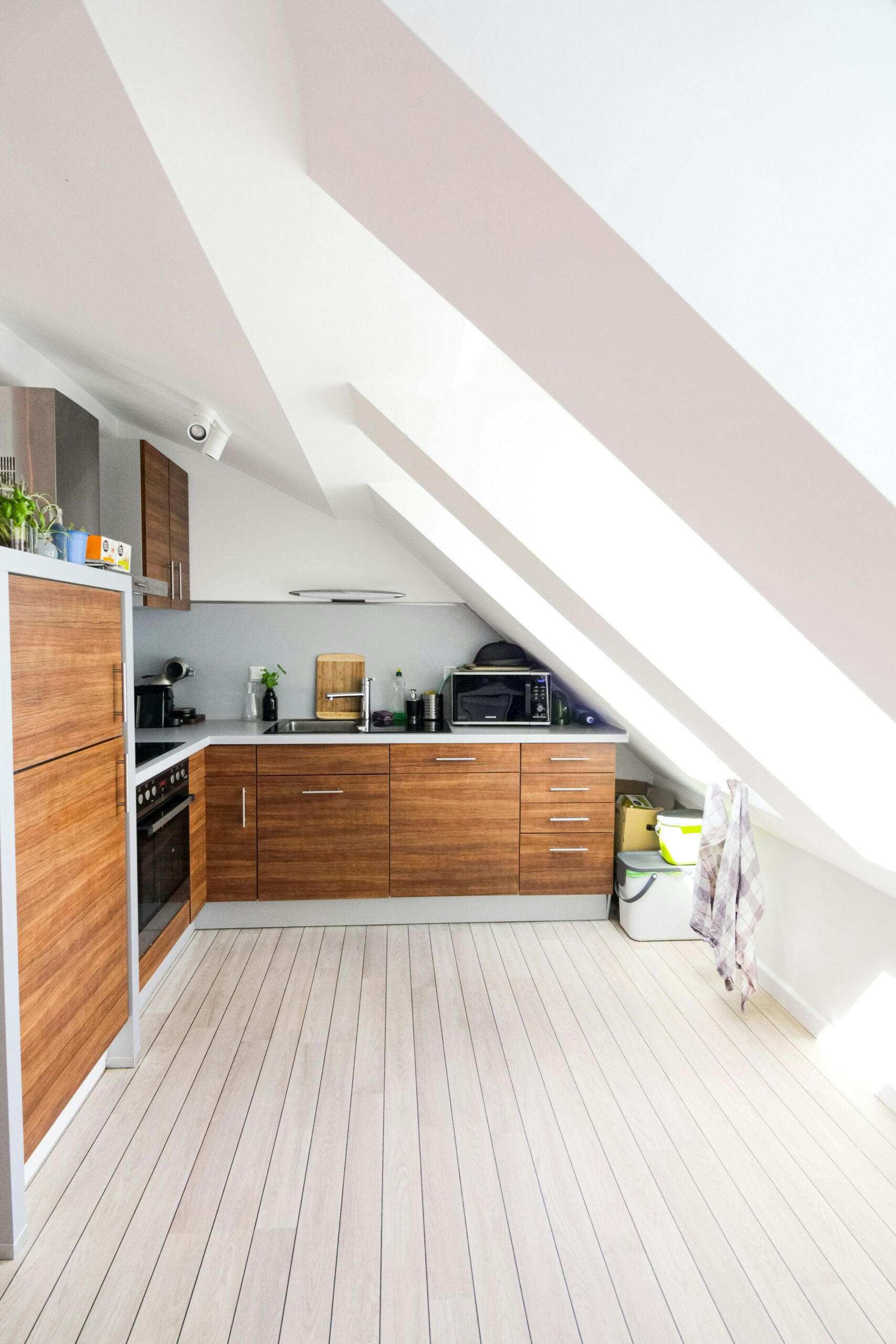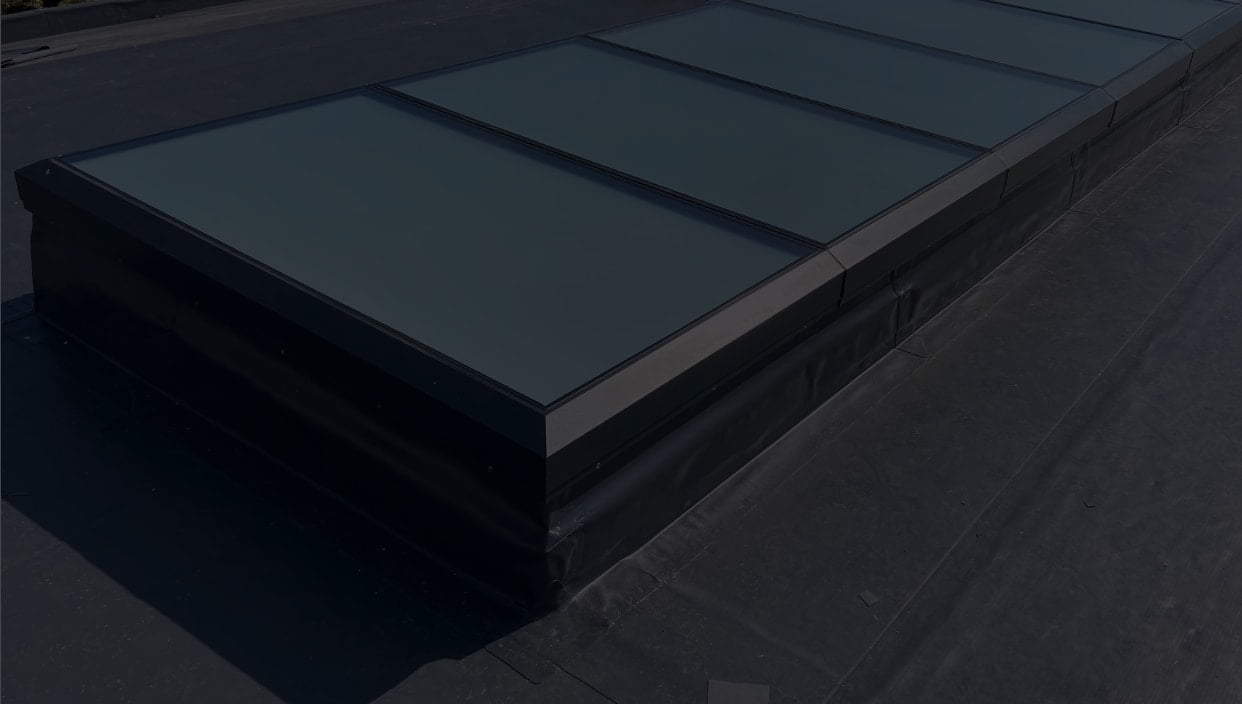
In this guide, we’ll describe what a rooflight loft conversion is, with information on potential benefits and drawbacks, as well as answers to frequently asked questions.
We sell a range of pitched roof windows ideal for loft conversions. You can also view our impressive collection of rooflights, roof lanterns, and roof windows.
What is a rooflight loft conversion?
A rooflight loft conversion utilises the space already underneath your rafters so that no roof extensions or dormers are required. A rooflight loft conversion will brighten up your home and make it feel more spacious without the need to alter your roof’s existing structure. By fitting windows into the roof’s slope, it allows plenty of natural light into the loft area. This type of conversion is relatively simple and cost-effective compared to more extensive modifications.
Is a rooflight loft conversion right for you?
Adding a rooflight loft conversion can improve your home in various ways, especially when compared to more extensive renovations. They provide a sense of more space and better airflow whilst increasing the value of your property.
They also do not require planning permission, which can make them a very appealing choice. This is due to rooflight loft conversions falling under permitted development laws. Learn more about planning permission for rooflights.
Despite being cost-effective and more straightforward, they don’t offer as much space as other extensions and home renovations.
There are also certain challenges with rooflight loft conversions, such as the placement of stairs – this can make things difficult due to head height requirements.
However, these can be overcome by working with a trusted professional to ensure the installation meets regulations and is safe.
Benefits of choosing rooflight loft conversions
Key benefits of rooflight loft conversions include:
They’re cost-effective
Choosing a rooflight loft conversion is a smart way to add more space to your home without spending a lot of money. It’s a cost-effective option that helps you save while still making your home more spacious and better.
They provide more natural light
Adding a rooflight means more sunshine can come into your attic, making it brighter and more pleasant. This change makes the room feel bigger and reduces the need for lamps and ceiling lights during the day.
They’re visually attractive
Rooflight loft conversions make your home look modern and stylish. Adding a window to your roof gives your house a fresh look from both inside and outside, making it more inviting and attractive.
Flexibility
This type of conversion gives you the freedom to use your new space however you want. Whether you need an extra bedroom, a place to work, or just a spot to relax, you can set it up to meet your needs.
Ventilation
Installing a rooflight helps air move better in your home, keeping it fresh and comfortable. Good airflow prevents dampness and keeps the air in your home clean, making it healthier to live in. Learn more about why roof ventilation is important.
Planning permission
Rooflight loft conversions are usually simpler to get started because they often don’t need special permission from local authorities. This makes it easier and faster to begin turning your attic into a useful space.
Increase home value
Loft conversions are attractive to potential buyers, and can increase home value. Learn more about how skylights can increase home value.
Potential drawbacks and challenges
If you are working with a limited amount of space, then installing roof light loft conversion could be potentially difficult. This also goes for older buildings or roofs that may not be structurally sound or difficult to work with. This is why you should always plan ahead to make sure you hire a qualified professional to evaluate your property before making any financial commitments.
Planning your rooflight loft conversion
Initial Considerations and Assessments
There are a few considerations you should make before deciding if you want to install a rooflight. The first thing you need to do if you want a rooflight loft conversion is a thorough evaluation of your current loft to confirm its suitability. You should take into account the safety of the rooflight (such as its height from the ground) and the structural integrity of the roof.
Understanding planning permissions and regulations
Typically rooflight loft conversions will not require planning permission as long as they meet the required guidelines. Despite this, you should always check with your local planning authority first to make sure. Rooflight conversions typically fall under ‘Permitted Development Rights’, as they are not adding to the space and only altering it.
You should make sure your rooflight loft conversion fits these guidelines:
- The rooflight will not protrude more than 15cm above the roof’s plane.
- The rooflight will not protrude over the roof ridge or be higher than the roof’s highest point.
- Any side-facing windows that are more than 1.7m above the ground and overlooking neighbours must be obscure-glazed.
- Any side-facing windows under 1.7m above the ground must not be able to be opened.
- No changes are made to the chimney, flue, soil or vent pipe, or solar panels.
Designing your rooflight loft conversion
Choosing the right rooflights for your space
The selection of appropriate roof lights is important to make sure the correct type is installed for your building. Factors to take into account include the size, style, and energy efficiency of the rooflights. Your choice needs to match not only your personal requirements but also the structure of your home.
Maximising natural light and ventilation
Strategic placement of your rooflight will be an important part of maximising the natural light and air circulation in your space. The orientation of your roof plays a pivotal role in harnessing the sun’s path for maximum light exposure. For example, if your roof is south-facing this is preferable, due to the direction the sun rises and sets in.
Aesthetic and practical design tips
Integrating the loft conversion with the rest of your home is not necessarily a requirement, but should still be taken into account, particularly if you want to increase your home’s value as a result of your investment. Selecting matching colours and materials, along with practical considerations such as installing blinds for light management and privacy, can maximise your chances of an increased market value.
The conversion process: Step-by-step
Initial evaluation
Start with an evaluation of your loft’s structural integrity, using a qualified professional to assess your building and finalise your design plans. It is important to not cut corners and to make sure all the necessary checks are completed thoroughly before proceeding any further.
The installation
As a customer, this is where you hand it over to the qualified professionals to carry out the required structural work on the roof to ensure the rooflight is installed correctly and safely. This would begin with carefully creating the opening for the window within your roof whilst ensuring it stays structurally sound.
The frame of the window would then be installed and reinforced, followed by the brackets to hold the window and all the mechanics to do with opening and closing it. The window itself comes next, and finally, any additional repairs to the roof are made to make sure it fits the window and is insulant of both heat and water.
Finishing touches
With the structural work now complete, the next part is adding finishing touches. This could include painting, decorating, and generally converting the space into a cosy, liveable part of your home. Once this is finished you can enjoy more natural light, have a feel of more space, and hopefully an increased value on your property.
Rooflight conversion cost and budgeting
Estimating your rooflight conversion costs
The financial planning for a roof light loft conversion depends on many factors. These include loft dimensions, the style of roof lights, the glazing and finish, and any other additional features. The cheaper rooflights range from around £300 but can go into the thousand. Installation costs can vary depending on the builder/roofing company used.
Our guide to rooflight and skylight costs contains more information.
Cost-saving tips and tricks
Save money on your rooflight loft conversion doesn’t mean compromising on quality. Opting for standard rooflight models and embracing minimalist design can significantly reduce material and labour expenses. Timing your project for the off-peak seasons might also make it easier to save due to less competitive rates for builders and roofers.
Get your loft conversion rooflight from Toughened Glass Systems
We sell a range of pitched rooflights ideal for loft conversions, and a wider range of rooflights that can also suit your new conversion. View our collection today, or contact us if you have any questions.
More helpful articles:
- Roof Lanterns: Complete Guide
- Roof Windows: Complete Guide
- Rooflights vs Skylights: Complete Guide
- Ceiling Decoration Ideas
- A Guide to Single Storey Extensions
- Can You Install a Rooflight on a Flat Roof? –
- Can You Add a Rooflight to a Garage?
- Kitchen Skylight Guide
Frequently asked questions
Can my neighbour object to my rooflight loft conversion in the UK?
As long as your rooflight adheres to the guidelines and fits within the Permitted Development rights, then your neighbour wouldn’t be able to object.
How long do rooflight loft conversions last?
If they are maintained correctly, they can typically last 20 years or more with typical wear and tear before they require replacing.
How much does a roof light conversion cost?
The lights themselves start at around £300 and can go into the thousands depending on the size and finishes. The installation costs completely depend on the building or roofing firm you use.
Do rooflight loft conversions leak?
If installed correctly then no, the rooflight should not leak and be insulant of any outside liquids getting into your home. View our guide on how to fix a leaking skylight.







